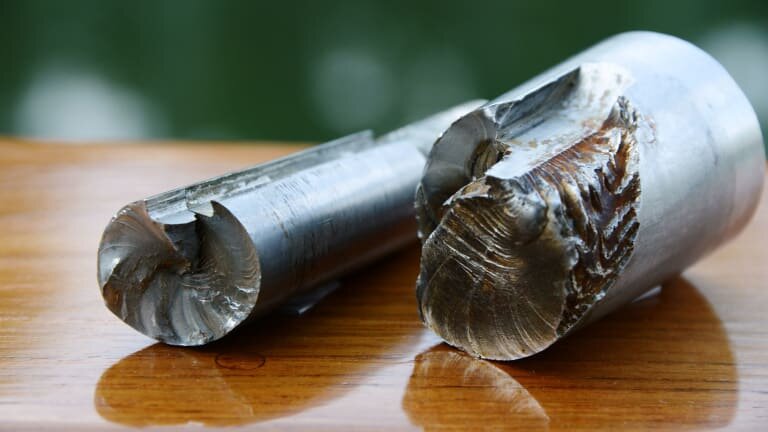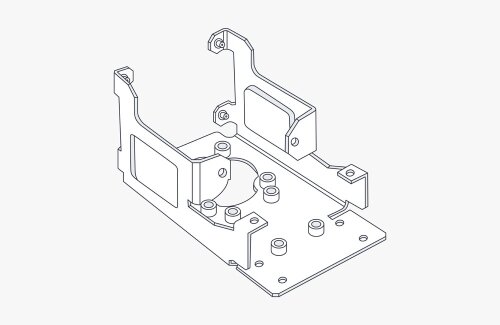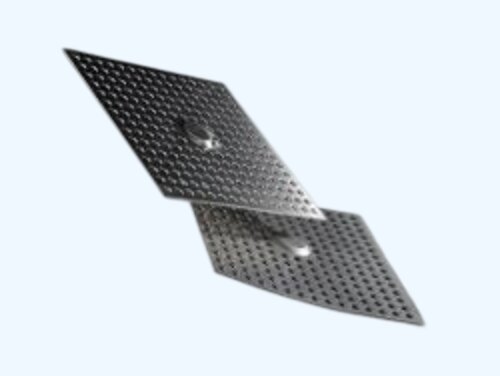تواجه العديد من الشركات المصنعة تحديًا مشتركًا: ربط الأجزاء المعدنية بسرعة وموثوقية. وغالبًا ما تحتاج طرق اللحام التقليدية إلى اللحاق بالركب، مما يتسبب في تأخير الإنتاج ومشاكل الجودة. يوفر اللحام بالإسقاط حلاً سريعًا ودقيقًا ومثاليًا للتصنيع بكميات كبيرة.
اللحام بالإسقاط هو شكل من أشكال اللحام بالمقاومة يستخدم الضغط والتيار الكهربائي لربط جزأين معدنيين أو أكثر. وهو يستخدم مقاطع مرتفعة أو "نتوءات" على أحد الأجزاء المعدنية لتركيز تيار اللحام والحرارة والضغط. تُنشئ هذه التقنية وصلات متناسقة وعالية الجودة في جزء من الوقت مقارنة بالطرق الأخرى.
هل تريد أن تعرف كيف يمكن لهذه التقنية أن تحدث ثورة في عملية الإنتاج لديك؟ دعنا نستكشف صواميل ومسامير لحام الإسقاط.
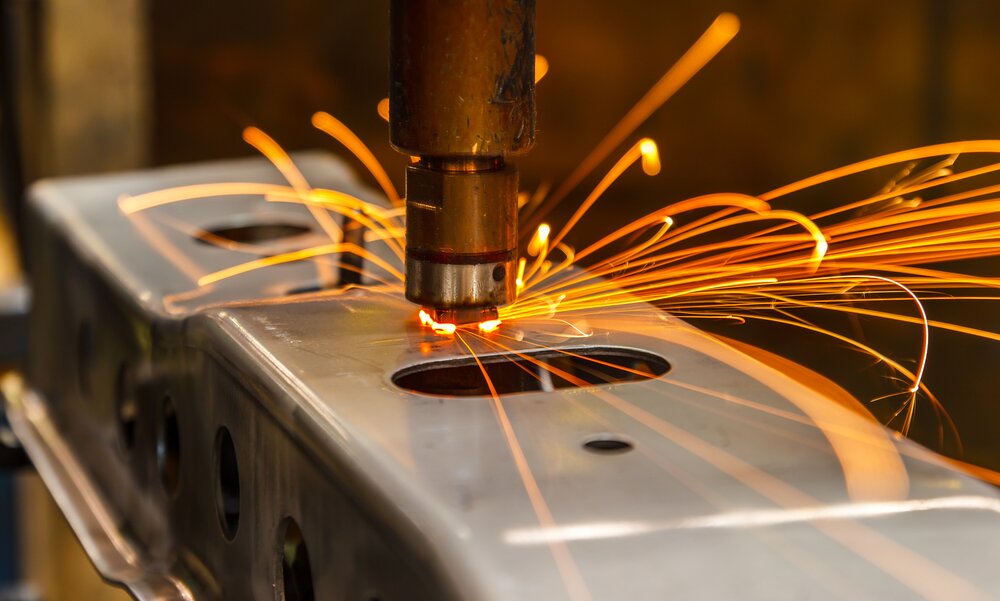
كيفية عمل اللحام بالإسقاط
تعمل الحرارة والضغط معاً في اللحام بالإسقاط لإنشاء روابط قوية. يمر تيار كهربائي عبر الأجزاء المعدنية أثناء الضغط. تركز الإسقاطات المرتفعة على تدفق التيار، مما يتسبب في تسخين سريع في نقاط محددة.
مبدأ اللحام بالإسقاط
تعمل الإسقاطات مثل قضبان البرق الصغيرة. فهي تركز على المقاومة الكهربائية وتولد الحرارة في المكان المطلوب بالضبط. ومع ارتفاع حرارة الإسقاطات وتليينها، يدفع الضغط الأجزاء معًا، مما يشكل كتلة لحام صلبة عند كل نقطة إسقاط.
المكونات الرئيسية المعنية
يحتاج كل إعداد لحام الإسقاط إلى ثلاثة عناصر رئيسية:
- مصدر طاقة يوفر تحكماً دقيقاً في التيار الكهربائي
- الأقطاب الكهربائية التي تضغط وتوصل الكهرباء
- نظام تحكم لإدارة التوقيت والقوة
تصميم القطب الكهربائي
تعمل الأقطاب الكهربائية على نجاح عملية اللحام أو فشلها. يجب أن:
- توصيل الكهرباء بكفاءة
- اضغط بشكل متساوٍ
- مقاومة التآكل والتشوه
- تطابق هندسة قطعة العمل
غالبًا ما تعمل أقطاب سبائك النحاس المبردة بالماء بشكل أفضل. يختلف تصميمها بناءً على الأجزاء التي يتم لحامها ومتطلبات سرعة الإنتاج.
تحضير قطعة العمل
يؤدي الإعداد المناسب للقطعة إلى لحامات أفضل. وهذا يشمل:
- أسطح نظيفة وخالية من الأكسيد
- إسقاطات ذات حجم وشكل صحيحين
- سمك المادة المتناسق
- التركيب المناسب بين الأجزاء
أنواع لحام الإسقاط
لدى المصنعين خياران رئيسيان للحام الإسقاط. يناسب كل نوع احتياجات الإنتاج وتصميمات القطع المختلفة.
لحام الإسقاط الموضعي
ينشئ اللحام بالإسقاط الموضعي نقاط لحام فردية. يعمل بشكل أفضل لـ
- الأجزاء التي تحتاج إلى نقاط اتصال متعددة ومنفصلة
- التطبيقات التي تكون فيها مسافات اللحام مهمة
- المشاريع التي تتطلب تحكمًا دقيقًا في الحرارة
تتألق هذه الطريقة في تجميع السيارات. يساعد في ربط ألواح الجسم, اقواسوالمكونات الأخرى بسرعة وموثوقية.
لحام الإسقاط المستمر
لحام الإسقاط المستمر يجعل خطوط اللحام غير منقطعة. هذه التقنية
- يربط الأجزاء على طولها بالكامل
- إنشاء أختام محكمة الإغلاق عند الحاجة
- معالجة قطع العمل الكبيرة بكفاءة عالية
يستخدم العديد من صانعي الأجهزة هذه الطريقة. وهي مثالية لإغلاق الحاويات أو ربط الشرائط المعدنية الطويلة.
مزايا كل نوع من الأنواع
عروض لحام الإسقاط الموضعي:
- انخفاض مدخلات الحرارة في الأجزاء
- أزمنة دورات أسرع
- تآكل أقل للقطب الكهربائي
- تحكم أكثر دقة
يوفر لحام الإسقاط المستمر:
- قدرات ختم أفضل
- قوة مفصل أعلى بشكل عام
- عدد أقل من نقاط التسرب المحتملة
- مظهر أكثر سلاسة
تطبيقات اللحام بالإسقاط
تستفيد الصناعات المختلفة من اللحام بالإسقاط لحل تحديات التصنيع الفريدة. دقته وموثوقيته تجعله خياراً مفضلاً للتطبيقات الحرجة.
صناعة السيارات
يعتمد صانعو السيارات بشكل كبير على اللحام بالإسقاط. يُستخدم لـ
- صواميل التثبيت على ألواح الهيكل
- ربط إطارات المقاعد
- ربط الأقواس والدعامات
- بناء المكونات الكهربائية
يمكن أن تحتوي السيارة الواحدة على آلاف اللحامات المسقطة. تساعد هذه الطريقة صانعي السيارات على زيادة سرعة الإنتاج مع الحفاظ على الجودة.
تطبيقات الفضاء الجوي
في مجال الطيران، يجب أن يفي كل لحام بالمعايير الصارمة. يقدم اللحام بالإسقاط عن طريق:
- إنشاء وصلات متناسقة وقابلة للتكرار
- تقليل الضرر الحراري للأجزاء الحساسة
- تقليل الوزن مقارنةً بالمثبتات الميكانيكية
- ضمان التوصيلات عالية القوة
تستفيد محركات الطائرات ومعدات الهبوط وأنظمة التحكم من هذه التقنية.
تصنيع الإلكترونيات
تحتاج الإلكترونيات إلى توصيلات كهربائية موثوقة. يساعد لحام الإسقاط عن طريق:
- توصيل أطراف البطارية
- إنشاء مكونات قاطع الدائرة الكهربائية
- تثبيت التلامسات الكهربائية
- بناء نوى المحولات
دقة اللحام بالإسقاط تمنع تلف الأجزاء الإلكترونية الحساسة.
الأجهزة والمعدات الطبية
يختار المصنعون الطبيون اللحام بالإسقاط بسبب ذلك:
- إنشاء وصلات نظيفة وخالية من التلوث
- يسمح بتعقيم المنتجات النهائية
- ينتج أسطحاً ناعمة بدون حواف حادة
- إجراء توصيلات صغيرة ودقيقة
من الأدوات الجراحية إلى الأجهزة القابلة للزرع، تلبي هذه الطريقة المعايير الطبية الصارمة.
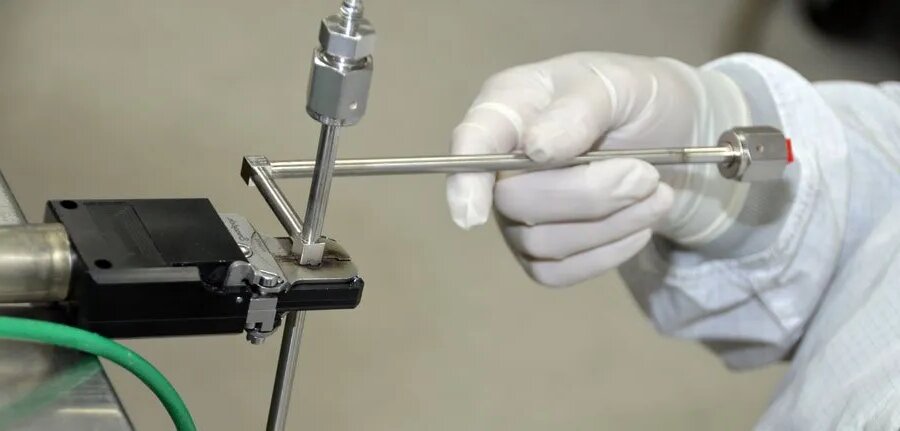
فوائد اللحام بالإسقاط
يبحث المصنعون الأذكياء دائمًا عن طرق إنتاج أفضل. يوفر لحام الإسقاط العديد من المزايا التي يمكن أن تعزز أرباحك النهائية.
كفاءة إنتاج عالية
يعمل لحام الإسقاط على تسريع الإنتاج بشكل كبير:
- تتشكل اللحامات في أجزاء من الثانية
- تحدث عمليات اللحام المتعددة في وقت واحد
- وقت الإعداد بين الأجزاء في حده الأدنى
- تتناسب الأتمتة بسهولة مع العملية
يمكن لماكينة واحدة إنتاج آلاف القِطع في الوردية الواحدة. يساعد هذا الإنتاج العالي على الوفاء بالمواعيد النهائية الضيقة والطلب المتزايد.
الفعالية من حيث التكلفة
الأرقام منطقية مع لحام الإسقاط:
- طاقة مستخدمة أقل لكل عملية لحام
- الحد الأدنى من المواد الاستهلاكية اللازمة
- انخفاض تكاليف العمالة بسبب الأتمتة
- انخفاض معدلات الخردة
تتراكم هذه الوفورات بسرعة. ترى العديد من الشركات عائد الاستثمار في غضون أشهر من التحول إلى هذه الطريقة.
تقليل التشويه والإجهاد
تتحسن الجودة مع لحام الإسقاط:
- تؤثر الحرارة على مناطق صغيرة ومحددة فقط
- تحافظ الأجزاء على شكلها بشكل أفضل
- يحدث التواء أقل أثناء العملية
- المنتجات النهائية تحتاج إلى إعادة صياغة أقل
تؤدي هذه الدقة إلى منتجات أقوى تتناسب مع بعضها البعض بشكل صحيح من المرة الأولى. وتقلل من الهدر ومطالبات الضمان.
التحديات في لحام الإسقاط
كل طريقة لحام لها عقباتها. تساعدك معرفة هذه التحديات على التخطيط بشكل أفضل وتجنب الأخطاء المكلفة.
العيوب الشائعة
يمكن أن تظهر مشكلات الجودة في اللحام بالإسقاط. الاكتشاف المبكر يحدث فرقاً كبيراً:
- البقع الضعيفة في اللحام
- حجم اللحام غير متناسق
- علامات السطح أو المسافات البادئة
- تشقق في اللحامات أو حولها
فحوصات الجودة المنتظمة تكشف هذه المشاكل بسرعة. تحافظ الإصلاحات السريعة على سير الإنتاج بسلاسة.
اختراق غير كاف
ضعف الاختراق يضعف اللحامات. ويحدث ذلك بسبب:
- تيار لحام منخفض
- وقت اللحام القصير
- تصميم الإسقاط الخاطئ
- أجزاء غير متناسقة
يساعد اختبار عينات الأجزاء على ضبط الإعدادات الصحيحة. يمنع الإعداد الجيد اللحامات الضعيفة.
ارتفاع درجة الحرارة
الكثير من الحرارة الزائدة تسبب مشاكل:
- بقع معدنية
- التصاق القطب
- تلون الجزء
- المسافة البادئة المفرطة
تعمل تعديلات التبريد والتوقيت المناسبة على حل معظم مشاكل الحرارة. أدوات التحكم الحديثة تجعل هذا الأمر أسهل من أي وقت مضى.
استراتيجيات التخفيف من المخاطر
التخطيط الذكي يتغلب على المشاكل قبل أن تبدأ:
- استخدام برامج المحاكاة للتنبؤ بالمشكلات
- تدريب المشغلين تدريباً شاملاً
- صيانة المعدات بانتظام
- مراقبة معلمات اللحام باستمرار
يساعد جمع البيانات على اكتشاف الاتجاهات. وهذا يتيح لك إصلاح المشاكل الصغيرة قبل أن تصبح مشاكل كبيرة.
مقارنة مع تقنيات اللحام الأخرى
اختيار طريقة اللحام الصحيحة له تأثير كبير. دعونا نقارن اللحام بالإسقاط بالخيارات الشائعة الأخرى.
اللحام بالإسقاط مقابل اللحام الموضعي
هناك اختلافات رئيسية بين أبناء العمومة هؤلاء:
لحام الإسقاط:
- إنشاء لحامات متعددة في وقت واحد
- يعمل بشكل أفضل مع المواد السميكة
- يحتاج إلى قطع معدة خصيصاً
- يوفر تحكماً أكثر دقة في الحرارة
- إعداد جزء أبسط جزء أبسط
- انخفاض تكاليف المعدات
- أكثر مرونة لأشكال الأجزاء المختلفة
- أسهل في التعلم والاستخدام
اللحام بالإسقاط مقابل اللحام بالمقاومة
على الرغم من تشابه هذه الطرق، إلا أنها تخدم احتياجات مختلفة:
لحام الإسقاط:
- تركيز الحرارة في نقاط محددة
- يقلل من المدخلات الحرارية الكلية
- يصنع مفاصل ذات مظهر أنظف
- يتعامل مع الأجزاء الهندسية المعقدة
لحام المقاومة:
- تتطلب أدوات أقل تخصصًا
- يعمل مع المزيد من تركيبات المواد
- تتكيف بسهولة مع أحجام القطع المختلفة
- يحتاج إلى تركيب جزء أقل دقة
المميزات والعيوب
يتألق لحام الإسقاط في بعض المناطق ولكنه يحتاج إلى تحسين في مناطق أخرى.
مزايا:
- سرعات إنتاج أعلى
- جودة لحام أكثر اتساقًا
- تآكل أقل للقطب الكهربائي
- أفضل للعمليات الآلية
سلبيات:
- ارتفاع تكلفة المعدات الأولية
- يتطلب تحضير القطعة بدقة
- يقتصر على المعادن المتوافقة
- إعداد وصيانة أكثر تعقيداً
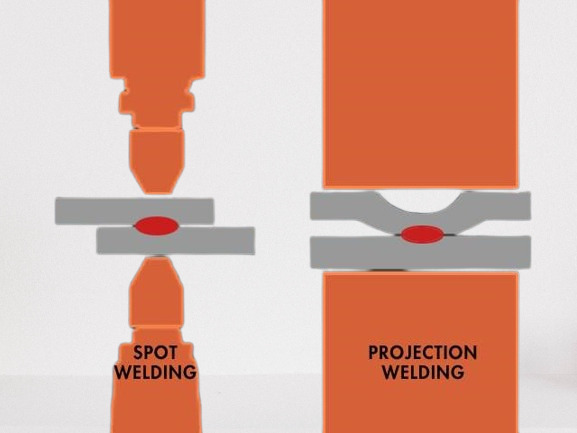
اختيار المعدات المناسبة للحام الإسقاط الضوئي
إن اختيار معدات اللحام المناسبة يؤهلك للنجاح. إذا قمت بهذه الخطوة بشكل صحيح، ستوفر الوقت والمال في المستقبل.
مواصفات المعدات الرئيسية
ركز على هذه العوامل الحاسمة:
ناتج الطاقة:
- تطابق مع سُمك المادة التي تستخدمها
- النظر في احتياجات الإنتاج المستقبلية
- ابحث عن الإعدادات القابلة للتعديل
- افحص نطاقي الجهد والأمبيرية
أنظمة التحكم:
- أدوات تحكم رقمية توفر دقة أفضل
- يساعد تسجيل البيانات في تتبع الجودة
- إعدادات قابلة للبرمجة تسرّع التغييرات
- المراقبة عن بُعد تعزز الكفاءة
خيارات القطب الكهربائي:
- تؤثر قدرة التبريد على سرعة الإنتاج
- يؤثر اختيار المواد على عمر القطب الكهربائي
- يجب أن يتطابق نطاق القوة مع الأجزاء الخاصة بك
- تصميمات سريعة التغيير تقلل من وقت التعطل
ميزات السلامة:
- توقف الطوارئ
- الحماية من التحميل الزائد
- الحراسة المناسبة
- أقفال أمان المشغل المتداخلة
الماركات والموديلات الموصى بها
تختلف أفضل خيارات المعدات حسب الحاجة:
الإنتاج على نطاق صغير الحجم:
- إمدادات طاقة متوسطة المدى (15-50 كيلو فولت أمبير)
- أدوات تحكم يدوية أو شبه أوتوماتيكية
- تتبع البيانات الأساسية
- خيارات الأقطاب الكهربائية القياسية
التصنيع بكميات كبيرة الحجم:
- أنظمة الطاقة العالية (75 كيلو فولت أمبير فأكثر)
- ضوابط مؤتمتة بالكامل
- أنظمة المراقبة المتقدمة
- تصميمات الأقطاب الكهربائية المتخصصة
خيارات مناسبة للميزانية:
- معدات مستعملة من تجار مرموقين
- الموديلات الأساسية من العلامات التجارية الكبرى
- خيارات الإيجار للأنظمة باهظة الثمن
- الطرازات الأساسية القابلة للترقية
خاتمة
يبرز اللحام بالإسقاط كحل قوي لاحتياجات التصنيع الحديثة. فسرعته ودقته وموثوقيته تجعله مثاليًا للإنتاج بكميات كبيرة. ومع ازدياد أهمية الأتمتة، ستزداد أهمية هذه التقنية. يؤتي الاستثمار الأولي ثماره من خلال أوقات إنتاج أسرع ومخرجات ذات جودة أعلى. بالنسبة للعديد من المصنعين، فإن إتقان اللحام بالإسقاط يمنحهم ميزة حقيقية في السوق التنافسية اليوم.
هل تحتاج إلى مصنع موثوق لأجزاء الصفائح المعدنية؟ شنغن هو المكان المناسب للذهاب. نحن متخصصون في قطع الصفائح المعدنية بالليزر، والثني، وتشطيب الأسطح، والتصنيع باستخدام الحاسب الآلي. تواصل مع شنغن اليوم وطلب المساعدة من المتخصصين!
الأسئلة الشائعة
ما هو اللحام بالإسقاط الذي يستخدم عادةً في اللحام؟
يتفوق لحام الإسقاط في ربط الصواميل والبراغي والأقواس بالأسطح المعدنية المسطحة. ويستخدمه صانعو السيارات بكثافة في ألواح الهيكل وتجميع الهياكل. كما أنه يعمل بشكل رائع مع المكونات الكهربائية مثل أطراف البطارية وملامسات المفاتيح.
ما هي المواد التي يمكن لحامها باستخدام اللحام بالإسقاط؟
تستجيب معظم المعادن الشائعة بشكل جيد للحام الإسقاط. ويظل الفولاذ هو الخيار الأفضل، خاصة الأنواع منخفضة الكربون وغير القابل للصدأ. كما يعمل النحاس الأصفر والنحاس بشكل جيد. يمكن لحام بعض سبائك الألومنيوم بهذه الطريقة أيضًا، على الرغم من أنها تحتاج إلى إعدادات خاصة.
كيف يمكن مقارنة اللحام بالإسقاط من حيث التكلفة بالطرق الأخرى؟
تكون التكلفة الأولية أعلى من طرق اللحام الأبسط، ولكن غالبًا ما تبرر الوفورات طويلة الأجل الاستثمار. فسرعات الإنتاج الأسرع، والهدر الأقل، وانخفاض تكاليف العمالة تتراكم بسرعة.
ما هي احتياطات السلامة التي يجب اتخاذها أثناء اللحام بالإسقاط؟
معدات السلامة المناسبة هي الأكثر أهمية - خوذات اللحام والقفازات المقاومة للحرارة والملابس المقاومة للهب. تهوية جيدة تزيل الأبخرة. الفحوصات المنتظمة للمعدات تمنع المخاطر الكهربائية. يساعد التدريب الشامل للمشغلين على تجنب الحوادث.
مهلا، أنا كيفن لي

على مدى السنوات العشر الماضية، كنت منغمسًا في أشكال مختلفة من تصنيع الصفائح المعدنية، وشاركت رؤى رائعة هنا من تجاربي عبر ورش العمل المتنوعة.
ابقى على تواصل

كيفن لي
لدي أكثر من عشر سنوات من الخبرة المهنية في تصنيع الصفائح المعدنية، وتخصصت في القطع بالليزر، والثني، واللحام، وتقنيات معالجة الأسطح. كمدير فني في شنغن، أنا ملتزم بحل تحديات التصنيع المعقدة ودفع الابتكار والجودة في كل مشروع.

